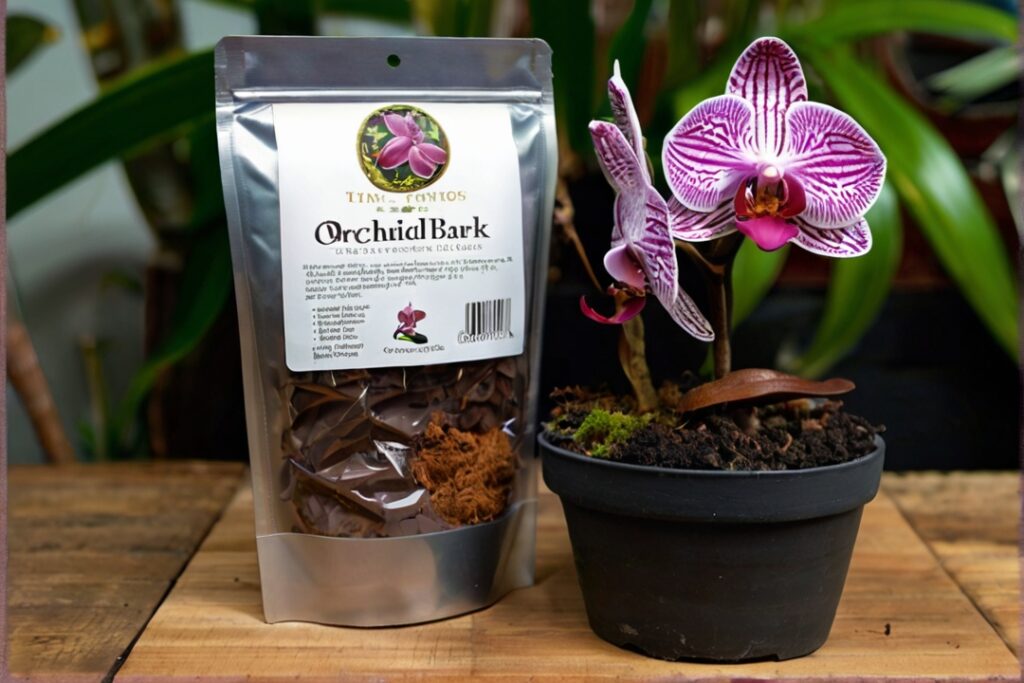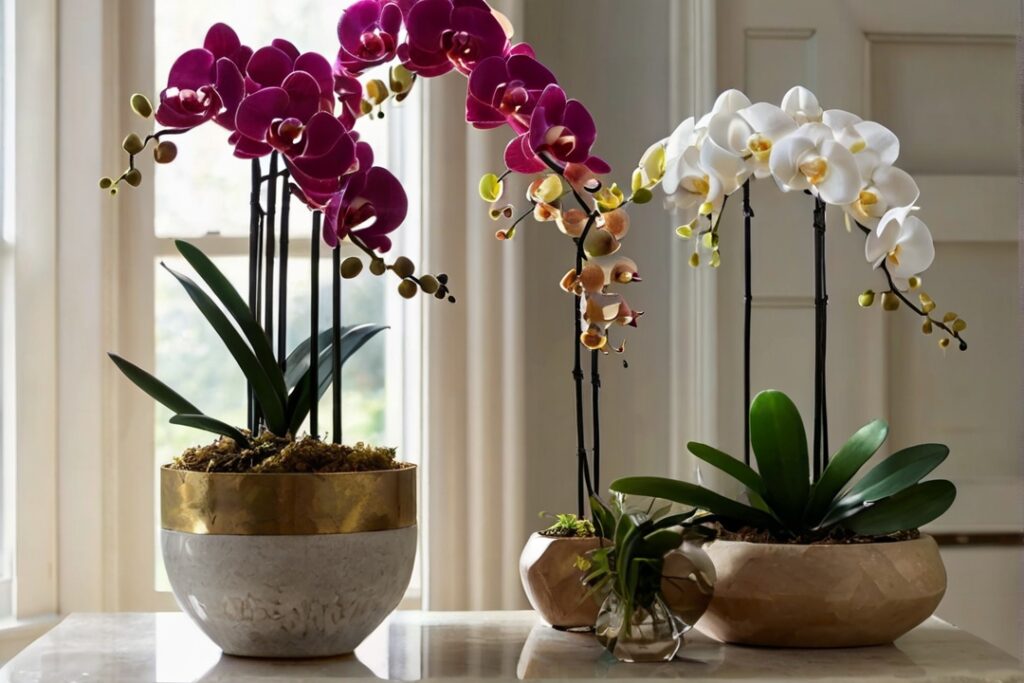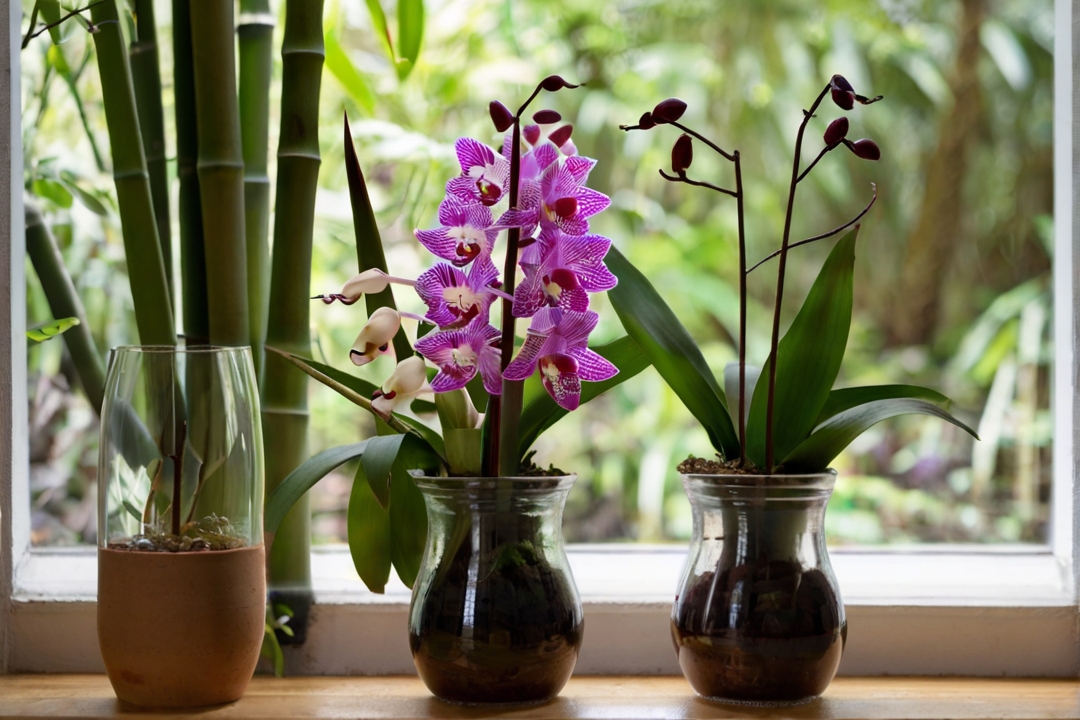Bamboo orchids, also known as Arundina graminifolia, have a rich history and are known for their unique features and elegant appearance. Bamboo orchids originate from Southeast Asia and have been cultivated for centuries. They were first discovered in the early 19th century by botanist Carl Ludwig Blume, who named them after the Greek word “Arundo,” meaning reed or bamboo, due to their tall and slender stems. Since then, bamboo orchids have become a popular choice for gardeners due to their beauty and ease of care.
Table of Contents
- Different Types of Bamboo Orchids
- Benefits of Growing Bamboo Orchids
- How to Choose the Right Soil and Pot for Your Bamboo Orchid
- Tips for Watering and Fertilizing Your Bamboo Orchids
- Proper Lighting and Temperature for Healthy Growth
- Common Pests and Diseases
- How to Propagate Bamboo Orchids: From Seeds to Cuttings
- Creative Ways to Display Your Bamboo Orchids: From Hanging Baskets to Terrariums
- Growing and Caring for Bamboo Orchids for a Lifetime of Beauty and Enjoyment
Bamboo orchids are characterized by their long, thin stems reaching up to three feet in height. The delicate flowers come in various colors, including white, pink, purple, and yellow. One of the most striking features of bamboo orchids is their lip, which are often brightly colored and patterned. This lip is a landing pad for pollinators, attracting bees and butterflies to the flower.
Different Types of Bamboo Orchids
There are several species of bamboo orchids, each with its unique characteristics and care requirements. Understanding the differences between these species can help you choose the right type of bamboo orchid for your needs.
Arundina graminifolia
One of the most common species of bamboo orchid is Arundina graminifolia, also known as the bamboo orchid or bamboo lily. This species is native to Southeast Asia and is characterized by its tall, slender stems and delicate flowers. Bamboo orchids are known for their ability to grow in various conditions, making them a popular choice for indoor and outdoor gardens.
Arundina bambusifolia
Another species of bamboo orchid is Arundina bambusifolia, native to India and Sri Lanka. This species is similar in appearance to Arundina graminifolia but has larger flowers and broader leaves. It requires identical care to its counterpart and can be grown in pots or planted directly in the ground.
Arundina speciosa
Lastly, there is Arundina speciosa, the purple bamboo orchid. This species is native to Southeast Asia and is characterized by its vibrant purple flowers. It requires similar care to other bamboo orchids but may need slightly more sunlight to produce its striking blooms.
When choosing the right type of bamboo orchid for your needs, consider factors such as the size of your space, the amount of sunlight it receives, and your level of gardening experience. Each species has unique growth habits and care requirements, so choosing one that will thrive in your specific environment is essential.
Benefits of Growing Bamboo Orchids
In addition to their beauty and elegance, bamboo orchids offer a range of benefits that make them a worthwhile addition to any garden or home.
Improve the Air Quality
One of the key benefits of growing bamboo orchids is their ability to improve the air quality in your home. Bamboo orchids absorb carbon dioxide and release oxygen during photosynthesis, like other plants. This can help purify the air and create a healthier environment for you and your family.
Reduce Stress
In addition to their air-purifying properties, bamboo orchids can also have a calming and stress-reducing effect on your environment. Studies have shown that being around plants can help reduce stress levels and improve overall well-being. Bamboo orchids in your home or garden can create a peaceful and serene atmosphere, helping you relax and unwind after a long day.
Feast for Eyes
Furthermore, bamboo orchids are known for their beauty and elegance. Their delicate flowers and slender stems add a touch of sophistication to any space. Whether displayed in a vase or planted in a garden, bamboo orchids will be a focal point and conversation starter.
Overall, the benefits of growing bamboo orchids extend beyond their aesthetic appeal. From improving air quality to reducing stress levels, these exotic flowers offer a range of advantages that make them a worthwhile addition to any home or garden.
How to Choose the Right Soil and Pot for Your Bamboo Orchid
Choosing the suitable soil and pot for your bamboo orchid is essential for its growth and overall health. Bamboo orchids require well-draining soil to prevent root rot and other moisture-related issues.

When selecting soil for your bamboo orchid, look for a mix specifically formulated for orchids. These mixes are typically made of bark, sphagnum moss, and perlite, which provide excellent drainage while retaining enough moisture for the plant’s roots.

In terms of pot selection, choosing a pot with drainage holes is essential to allow excess water to escape. This will prevent water from pooling at the bottom of the pot and causing root rot. Additionally, consider the size of the pot and the size of your bamboo orchid. A pot that is too small can restrict root growth, while a pot that is too large can hold too much moisture and lead to root rot.
When repotting or transplanting your bamboo orchid, handle the plant carefully to avoid damaging its delicate roots. Remove the plant from its current pot and shake off any excess soil. Place the plant in its new pot, ensuring the roots are evenly spread. Fill the pot with fresh soil, pressing it down gently to secure the plant. Water the plant thoroughly after repotting to help settle the soil and provide moisture to the roots.
Choosing suitable soil and pot for your bamboo orchid can create an optimal growing environment that promotes healthy growth and prevents common issues such as root rot.
Tips for Watering and Fertilizing Your Bamboo Orchids

Proper watering and fertilizing are crucial for the health and growth of your bamboo orchids. These plants have specific water and nutrient requirements that must be met to ensure their well-being.
When watering your bamboo orchids, balancing overwatering and underwatering is essential. These plants prefer to be kept slightly moist but not overly wet. To determine when to water, check the soil’s moisture level by sticking your finger about an inch into the soil. If it feels dry at this depth, it’s time to water.
When watering, thoroughly saturate the soil until water drains out of the bottom of the pot. This will ensure that the roots receive enough moisture without becoming waterlogged. Avoid letting water sit in the saucer or tray beneath the pot, which can lead to root rot.
Regarding fertilizing, bamboo orchids benefit from regular feeding during their active growing season. Use a balanced orchid fertilizer that is specifically formulated for these plants. Follow the instructions on the fertilizer packaging for proper dilution and application rates.
It’s important not to over-fertilize your bamboo orchids, as this can lead to salt buildup in the soil and damage the roots. A general rule of thumb is to fertilize every two weeks during the growing season and reduce frequency during dormancy periods.
Following these watering and fertilizing tips ensures that your bamboo orchids receive the proper care and nutrients they need to thrive.
Proper Lighting and Temperature for Healthy Growth
Proper lighting and temperature are essential for the healthy growth of bamboo orchids. These plants have specific light and temperature requirements that must be met to ensure their well-being.
Bamboo orchids thrive in bright, indirect light. They prefer a location that receives filtered sunlight or bright, indirect light for several hours daily. Avoid placing them in direct sunlight, as this can cause the leaves to burn and damage the plant. Place your bamboo orchid near a window that receives bright, indirect light if growing indoors.
In terms of temperature, bamboo orchids prefer warm and humid conditions. They thrive in temperatures between 65°F and 85°F (18°C to 29°C). Avoid exposing them to extreme temperature fluctuations or drafts, which can stress the plant and hinder its growth.
To create a humid environment for your bamboo orchid, consider placing a tray filled with water near the plant or using a humidifier. This will help mimic the natural conditions these plants prefer and promote healthy growth.
Providing your bamboo orchid with the proper lighting and temperature conditions ensures that it thrives and produces beautiful blooms.
Common Pests and Diseases
While bamboo orchids are generally low-maintenance plants, they can still be susceptible to certain pests and diseases. Awareness of these common issues can help you identify and treat them before they cause significant damage to your plants.
Aphids
One common pest that can affect bamboo orchids is aphids. These tiny insects feed on the plant sap, causing leaves to curl and become distorted. To treat aphids, you can use insecticidal soap or neem oil. Apply these treatments according to the instructions on the packaging, thoroughly covering the affected areas.
Spider Mites
Another pest to watch out for is spider mites. These tiny pests can be challenging to see with the naked eye but can cause significant damage to your bamboo orchids. Signs of a spider mite infestation include yellowing leaves and fine webbing on the plant. To treat spider mites, you can use insecticidal soap or a miticide formulated explicitly for these pests.
Root Rot
In terms of diseases, bamboo orchids can be susceptible to root rot if they are overwatered or planted in poorly draining soil. To prevent root rot, ensure that your bamboo orchid is planted in well-draining soil and that excess water can drain from the pot. If you suspect root rot, remove the affected parts of the plant and repot it in fresh soil.
Fungal Infection
Another disease to watch out for is fungal leaf spot. This disease causes dark spots on the leaves and can spread if not treated promptly. To treat fungal leaf spots, remove affected leaves and apply a fungicide according to the instructions on the packaging.
By being vigilant and regularly inspecting your bamboo orchids for pests and diseases, you can catch and treat these issues before they cause significant damage to your plants.
How to Propagate Bamboo Orchids: From Seeds to Cuttings
Propagating bamboo orchids is a rewarding way to expand your collection or share these beautiful plants with others. You can use several methods to propagate bamboo orchids, including seeds and cuttings.
Propagate Bamboo Orchids from Seeds
- Start by collecting mature seed pods from a healthy plant.
- Allow the pods to dry out for a few days before opening them to collect the seeds.
- Sow the seeds in a tray filled with moist orchid mix and cover them lightly with additional mix.
- Place the tray in a warm and humid location, such as a greenhouse or under a plastic dome.
- Keep the soil consistently moist but not overly wet. The seeds should germinate within a few weeks. Once they have developed several leaves, they can be transplanted into individual pots.
Propagation Through Stem Cuttings
Another method of propagation is through stem cuttings. Select a healthy stem with several nodes :
- Select gate bamboo orchids from cuttings.
- Use a clean and sharp knife or scissors to cut the stem below a node.
- Remove any leaves from the lower portion of the cutting, leaving only a few at the top.
- Dip the cut end of the stem in the rooting hormone to promote root development.
- Place the cutting in a pot filled with a moist orchid mix in a warm and humid location.
- Keep the soil consistently moist and mist the cutting regularly to maintain humidity.
Roots should develop within a few weeks, and once they are well-established, the cutting can be transplanted into its pot.
When propagating bamboo orchids, providing the right conditions for success is essential. This includes maintaining proper humidity levels, providing adequate light, and ensuring the soil is consistently moist. Following these steps, you can successfully propagate bamboo orchids and expand your collection.
Creative Ways to Display Your Bamboo Orchids: From Hanging Baskets to Terrariums
Bamboo orchids are not only beautiful on their own. Still, they can also be incorporated into unique and creative displays that add a touch of elegance to your home or garden.
Creating a hanging basket is one creative way to display your bamboo orchids. Choose a basket with good drainage and line it with sphagnum moss or coconut coir to hold the soil in place. Fill the basket with a well-draining orchid mix and plant your bamboo orchids, ensuring the roots are evenly spread. Hang the basket in a location that receives bright, indirect light, and water it regularly to keep the soil moist.
Another creative option is to create a terrarium for your bamboo orchids. Choose a glass container with a lid that allows for airflow. Fill the bottom of the container with a layer of gravel or pebbles for drainage. Add a layer of activated charcoal to help filter the air and prevent odors. Fill the container with a well-draining orchid mix and plant your bamboo orchids, ensuring that the roots are spread out evenly. Place the lid on the container and position it in a location that receives bright, indirect light. Water the terrarium regularly to keep the soil moist but not overly wet.
You can also incorporate bamboo orchids into your home decor by placing them in decorative pots or vases. Choose containers that complement the flowers’ elegance and match your style. Whether displayed on a mantel, coffee table, or windowsill, bamboo orchids are sure to add a touch of sophistication to any space.
By displaying your bamboo orchids creatively, you can showcase their beauty and elegance in unique and eye-catching ways.
Growing and Caring for Bamboo Orchids for a Lifetime of Beauty and Enjoyment
In conclusion, bamboo orchids are an exotic and elegant flower that can add beauty and sophistication to any home or garden. Their unique features and ease of care have become a popular choice for gardeners and flower enthusiasts worldwide.
Understanding the different types of bamboo orchids and their care requirements is essential for successful growth. From choosing the suitable soil and pot to providing proper lighting and temperature conditions, each aspect plays a crucial role in the health and vitality of bamboo orchids. When it comes to soil, these orchids prefer a well-draining mix that retains some moisture but doesn’t become waterlogged.
A mixture of bark, sphagnum moss, and perlite is often recommended. As for pots, suitable drainage holes are best to prevent water from accumulating at the roots. In terms of lighting, bamboo orchids thrive in bright, indirect light. Placing them near a window with filtered sunlight or using artificial grow lights can help meet their light requirements.
Temperature-wise, these orchids prefer a warm and humid environment, with temperatures ranging between 65-85°F (18-29°C) during the day and slightly more relaxed at night. Providing adequate humidity through misting or using a humidifier is also essential for their well-being. Bamboo orchids can flourish and reward their caretakers with stunning blooms by understanding and meeting these care requirements.

